You want to invest in solar energy and you are wondering about the production of a solar panel. It is also possible that you do not understand their operation in detail.
These are the questions answered in this guide. We know that it is not easy to find clear and simple information on the subject. That’s why we explain everything about the performance of a solar panel that is photovoltaic, thermal or hybrid.
—
SUMMARY
- The basics for understanding the production and output of solar panels
- What does solar power efficiency and output depend on and how can it be improved?
- How does the output of panels change over time?
- How to monitor the output of solar panels ?
- How to calculate the energy production and output of your panels ?
Basics for understanding the output and production of solar panels
The photoelectric effect: how do photovoltaic panels produce electricity?
Already familiar with the photoelectric effect and have the units of Kwh? Go directly to the next part.
First of all, you have to understand how these panels work. The photoelectric effect was discovered in 1839 by Alexandre Edmond Becquerel. Concretely, this effect is observed in some materials that emit electrons when struck by light.
In the case of a photovoltaic solar panel, it is the use of so-called photovoltaic cells which makes it possible to produce the photoelectric phenomenon. These cells are produced from silicon. Silicon is the main component of sand and is therefore a very common material on the surface of the planet. A panel is composed of 60 to 62 cells of this type connected in series.
Photovoltaic cells are semiconductors. These are materials that are insulating or conductive depending on conditions. In effect, a semiconductor becomes conductive if it is heated, if it is illuminated or if subjected to a particular voltage. In the case of photovoltaic cells, when illuminated, they become conductive and allow the creation of an electric current.
Allow us to explain this phenomenon in detail: what we seek with solar panels, it is to produce an electric current, i.e. a circulation of electrons. To create it, one needs on one end of a dipole a surplus and the other a deficit of electrons. This makes it possible to create a potential difference between the poles, i.e. a voltage, and therefore the conditions for the appearance of the electric current.
To do this, the photovoltaic cells are composed of two plates connected by conductive wires. The first, the upper layer, has a surplus of electrons. The second, the lower layer, has a deficit of electrons. It is this polarization, found in the poles represented respectively by the symbols – and +, which allows the creation of the electric current.
Let’s summarize what’s going on. First, the photons hit the surface of the panel. Subsequently, the electrons released under the action of the sun, cross the plates. The resulting difference in polarity ensures the creation of an electric current. By connecting the solar panels to an electrical circuit, we can then supply power to the electrical devices. Photovoltaic panels are thus ingenious systems of energy production. Unfortunately, the efficiency of a photovoltaic panel decreases as the heat increases.
What is a kWh ?
A kWh (kilowatt-hour) is a unit of energy. The W comes from Watt. This unit of power received its name from James Watt. We find measurements of Watts on lightbulbs for example. Watt and kW refer to the energy of a device. It it not directly related to the kWh. The unit W is used when you want to know energy performance (production or consumption) over time. This serves for example for energy balances. It represents energy consumption over time. Take an analogous image of a flowing faucet. The kW (= 1000 W) could correspond to the water flow of the tap. While the kWh would be the amount of water that could be collected in a bottle in one hour with this tap. These are two different things. The difference is important because if a solar installation is rated at 100 kW of power, it will not necessarily produce 100 kWh of energy in one hour. Indeed, it will not work without interruption.
The electrical power of a photovoltaic solar panel
The power of solar photovoltaic panels is expressed in Watt peak, abbreviated Wp in English, Wc in French. The number of cells in the panel and their quality defines the power of a given panel. The current power standard for photovoltaic solar panels is around 300 Wp.
It must be taken into account that the nominal peak power corresponds to these given conditions:
- A temperature neither too cold nor too hot of 25 °
- Incident sunshine of 1000 watts per m2
- An inclined surface of 30 ° and directed towards the south
- Clear sky
The kWh ensures that you know the maximum theoretical capacity of a solar panel and gives you an idea of its performance. Nevertheless, with all the elements to take into account in a solar installation, keep in mind that the kWp is approximate information.
The more technologies improve, the more powerful and efficient the panels become.
Solar thermal, how does it work ??
With regard to solar thermal, the process is not the same. Indeed, it is not the photoelectric effect that is used. Here, it is the heat of the sun that is recovered and accumlated by sensors and transmitted via a thermal conductant.
This type of solar panels has a better yield than photovoltaics. It is around 80%. Photovoltaic efficiency, on the other hand, depends on the type of panel used. This varies between 5 to 7% for amorphous silicon up to 18 to 24% for monocrystalline silicon (see below: types of solar panels).
Thermal power of a solar thermal panel
With regard to solar thermal panels, the power is represented in Watts. The yield of a solar thermal panel is expressed in W per m2. Thus, in the case of the thermal, it is better to think in terms of m2 of thermal capture installed. A larger area of solar panels can produce more energy. The choice of the surface to be installed depends on your needs. If you want to use heat for your water heater, for home heating or for both, the needs will not be the same.
The quality of the solar panels
Different certifications have been developed to guarantee the purchaser of a solar panel to easily recognize a quality product. These certifications are useful to guide you in your purchases. But they are also necessary if you want to get state aid when setting up solar panel systems. This is one of the reasons why DualSun has both IEC and Solar Keymark certifications.
IEC stands for International Electrotechnical Commission. The commission’s mission is to standardize the electricity, electronics and nanotechnologies sectors. As such, their prerogatives also apply to solar panels that are devices producing electrical energy.
An IEC certified solar panel is electrically secured. In addition, the certification guarantees that it has a minimum efficiency of 12%.
The second certification, called Solar Keymark, is European too. The European Committee for Standardization (CEN) has put it in place. It guarantees the consumer a level of quality validated by various tests carried out on the products.
Do not neglect certifications. Solar panels, like many sectors, may see unscrupulous people selling non-compliant products. It would be a shame to invest money in defective products.
Types of solar panels
Wanting to install solar panels is good. However, one of the main difficulties is to getting to know about them because there are many types. Let’s see below, all the types of panels.
Photovoltaic panels
The first type of panel is, as we saw earlier, photovoltaics. This uses a photoelectric process, explained above, hosted in silicon cells. These can be of different types.
Panels made from monocrystalline silicon cells are the most expensive. However, a solar panel equipped with these cells will have a higher efficiency than the others. This is around 18 to 24%. Panels can also be made from polycrystalline silicon cells. This is the most common silicon. Its efficiency is below the monocrystalline. It is 14 to 18%. Panels with cells made of amorphous silicon have the lowest efficiency. This oscillates between 5 and 7%. This type of silicon is cheaper than crystalline forms.
Flexible solar panels
These are not silicon cells. These are composed of organic polymers. It is through textile-like printing techniques that it is possible to produce them in large quantities. The consequence of such a process is much lower cost than a normal solar panel. However, the efficiency of these panels leaves much to be desired. They do not have the same utility and are used for small objects (e.g., pocket calculators).
This type of technology is also found in solar chargers or solar carpets. The latter are types of solar mats to install near swimming pools. There are also relatively small sized flexible solar panels composed of silicon cells suitable for automotive, marine or nomadic use.
Perovskite
This unfamiliar name is actually calcium titanate. In the same way as organic cells, it is possible to print them. However, they are 5 times more efficient.
They are very promising and can be installed everywhere: windows or various building elements. As surprising as it may seem, they can even be applied to a wall like traditional paint. The huge advantage of perovskite is its ability to produce energy with very little light. It works even with artificial lighting! This allows the “recycling”of the energy used to create artificial lighting.
Thermal solar panel
The second type of solar panels, solar thermal does not use the same physical mechanisms to produce energy. Consequently, their components differ too.
This type of installation is composed of glass tubes. Each of these tubes is formed from two elements: an absorber and an exchanger. The first captures energy from solar radiation while the second allows the transfer of energy to the system. These tubes are vacuum-sealed. This prevents any loss of heat. The solar thermal tube has an excellent efficiency on the order of 75%.
To operate, a solar thermal installation needs a so-called heat transfer fluid. As its name suggests, it serves to transmit heat. A heat transfer fluid must have several properties:
- It must be anti-corrosive.
- Have a low viscosity to facilitate its circulation.
- Have a high specific heat capacity that reduces any loss of thermal energy.
- Withstand extreme temperatures.
It may be water or a mixture of water and antifreeze. This fluid flows through the tubes organized in the form of channels. These generally cover the entire surface of the solar panel.
In solar thermal, as in solar photovoltaic, there are several technologies. First, there is what we call a flat glazed or unglazed sensor. If it is unglazed, the tubes are in direct contact with the sun. This type of installation has the worst performance. If it is glazed, on the contrary, this creates a greenhouse effect increasing its efficiency.
Then we have the tubular capture method. The latter is more efficient and more expensive. Its operation guarantees energy optimization. Their double skin in particular improves the contributions from solar radiation.
What does solar energy efficiency and output depend on and how can it be improved ?
The performance of your panels depends on the type, but also on various environmental factors.
Your level of sunshine
First, it is the level of sunshine that will affect the performance of your installation. Depending on your geographical position, this level will be different.
The northern part of France and the north-east of the country has a solar energy production capacity estimated between 800 and 1000 kWh / kWp. In contrast, the southern part of the country and Corsica can expect a production of the order of 1200 to 1400 kWh / kWp This calculation of photovoltaic production is approximate and is applicable only in optimal conditions hence the unit of kWp.
In addition, you should not think that solar is only for the regions of southern France. On the one hand, we must take into account the microclimates of each region. On the other hand, some countries, such as those in northern Europe, encourage the production of solar energy. Finland has, for example, set up initiatives to promote solar energy, such as the FinSolar project.
Therefore this shows that this energy of the future is applicable everywhere. A calculation can make it possible to get an idea about the performance of a solar panel, but should not alone discourage a desire to go solar. The MyDualSun simulator provides an estimate of the energy production potential of your home.
The influence of temperature
On pourrait penser que plus il fait chaud, mieux c’est pour la production d’énergie solaire. Eh bien non ! Au-delà d’une température de 25°, le rendement d’un panneau solaire diminue. Chaque degré au-delà de cette limite diminue l’efficacité de l’installation de 0,5 %.
C’est la raison pour laquelle les panneaux solaires hybrides sont intéressants. Grâce à un échangeur thermique, ils préservent constamment une température basse. Leur rendement est donc meilleur qu’un panneau photovoltaïque classique.
The orientation and inclination of solar panels
Orientation and inclination are essential factors in the efficiency of your installation. They depend on the type of solar panels used as well as your needs. It is important to study these issues of inclination and orientation during a solar installation project.
See our detailed article on the subject: Orientation and Tilt of Solar Panels Panel
Cleaning of solar panels
Solar panels require little maintenance. The rain is enough to clean them regularly. However, it is advisable to carry out an annual cleaning in order to maintain their yield. Indeed, if the panels accumulate a layer of different dusts and get dirty, they can lose from 3 to 16% of efficiency per year. Note however that again, everything depends on your particular installation. Solar panels with little inclination, near a plant, or installed in an area with little or no precipitation will quickly become dirty. On the other hand, if your panels are sufficiently sloped and it rains relatively often, they require less maintenance.
Influence of shade and distant shadows
Finally, we must not neglect the importance of shadows. All the elements that produce a shadow over the solar panels reduce the performance of the latter. This can be a fireplace or a tree for example. These close shadows should all be taken into consideration.
However, we tend to forget the distant shadows. This may involve a distant mountain or a large building. Depending on the time of day, they may reduce the energy output of your facility.
Early in the development of solar energy, photovoltaic panels were very sensitive to shading. The current panels manage much better if part of their surface is shaded. In addition, the use of microinverters makes it possible to prevent a shaded solar panel within a series from reducing the efficiency of the entire series of panels.
How does the efficiency and output of panels evolve over time?
Everything is subject to time, even solar panels. Over the years, their performance decreases. We are talking about a minimal reduction each year in the range of 0.5% to 0.8%. As a result, after 10 years of operation, the panels retain at least 90% of their efficiency.
Rest assured the production is guaranteed 25 years.
How to monitor the production of solar panels ?
There are tools to track the production and performance of your solar panels efficiently and in real time. This allows a calculation of the yield of a solar panel and gives you, for example, its photovoltaic production per day. This electrical monitoring is done via monitoring platforms. The so-called Envoy marketed by Enphase, for example, is what is called a communication platform. This will retrieve all the necessary information. It obtains them via the micro-inverters installed in the photovoltaic modules.
Another way to monitor your installation is to use the DualSun T-BOX. It analyzes the thermal part of the installation. Used in conjunction with DualSun products, it allows to monitor in real time its installation in a dedicated space on MyDualSun.
How to calculate the output and energy output of your panels ?
What is the average annual production of a panel ??
To know the annual production of a solar panel, it is necessary to study your particular situation. As we have seen, many parameters are taken into account. Fortunately, before deciding to invest, it is possible to get simulations that will help you learn about the performance of a solar panel.
How are panel productions calculated on MyDualSun ??
At DualSun, we have developed a simulator for solar installations that allows you to obtain a very precise estimate of the solar capacities of your roof. By visiting the MyDualSun tool and answering a few questions, you will quickly get an estimate.
The simulator takes into account your address, the dimensions, the shape and orientation of your roof and your energy needs. All these elements will be used to propose a solution adapted to your real needs and your situation. This allows you to start thinking about the relevance and cost-effectiveness of installing solar panels at home.
To continue reading, we recommend:
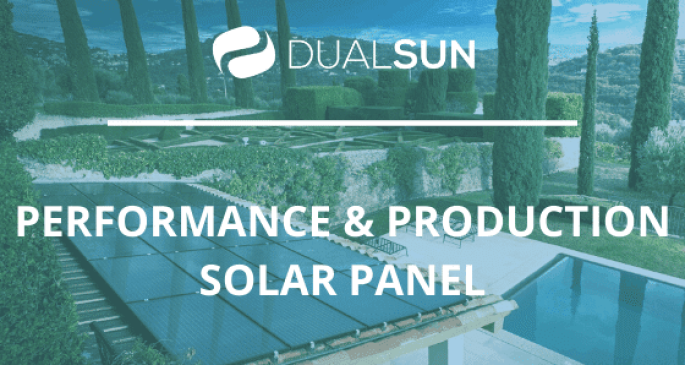
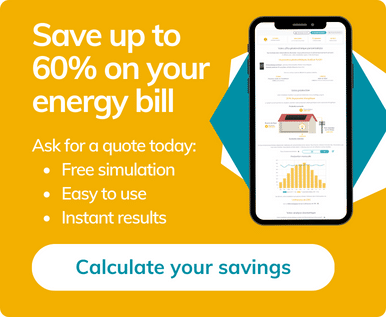
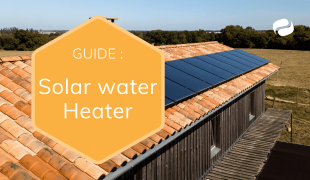
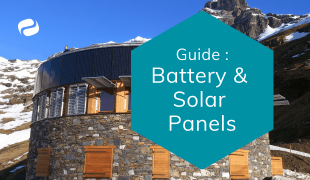
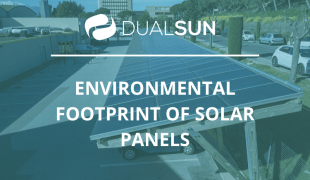
Aucun commentaire.
Leave a comment
Votre adresse e-mail ne sera pas publiée. Les champs obligatoires sont indiqués avec *